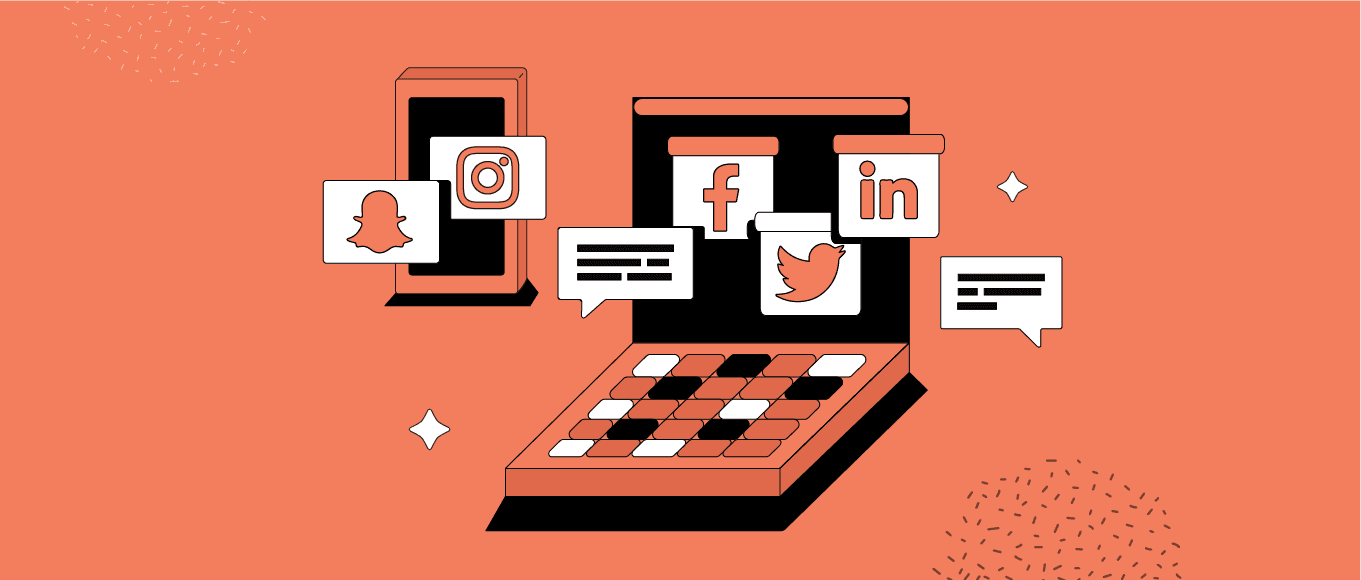In the ever-evolving landscape of social media marketing, timing is everything. Your content may be top-notch, your visuals stunning, but if you post at the wrong time, your efforts might go unnoticed. Understanding when your target audience is most active and engaged can make a substantial difference in the success of your social media campaigns. In this blog, we’ll explore the art and science behind finding the best timings to post your content on social media platforms.
The Dynamics of Social Media Timing
Social media platforms are not static landscapes; they are dynamic ecosystems where user behavior can vary significantly throughout the day and week. Here are some key factors that influence the timing of your social media posts:
1. Platform Variation: Different social media platforms have different peak usage times. What works on Facebook might not work on Twitter or Instagram.
2. Audience Demographics: Understanding your audience’s demographics and habits is crucial. Factors like age, location, and profession can influence when they are most active on social media.
3. Content Type: The type of content you’re posting (e.g., text, images, videos, articles) can impact the best posting times. For instance, people may engage more with visual content during their lunch breaks.
4. Industry or Niche: Your industry or niche can also affect the ideal posting times. B2B audiences might be more active during business hours, while B2C audiences may engage more in the evenings or weekends.
5. Time Zones: If your target audience spans multiple time zones, it’s crucial to schedule posts that cater to each region’s local time.
The Science of Social Media Timing
While there’s no one-size-fits-all answer to the best times to post on social media, various studies and data-driven analyses have provided valuable insights into user behavior patterns. Let’s explore the optimal posting times for some of the most popular social media platforms:
1. Facebook:
- Weekdays: Generally, mid-mornings (9:00 AM to 11:00 AM) and mid-afternoons (1:00 PM to 3:00 PM) on Tuesdays, Wednesdays, and Thursdays tend to see higher engagement.
- Weekends: Engagement is highest on Saturdays and Sundays, typically during the afternoon.
2. Twitter:
- Weekdays: Tweets are often most effective during lunch breaks (12:00 PM to 1:00 PM) and after work (5:00 PM to 6:00 PM). Wednesdays are considered optimal for B2B content.
3. Instagram:
- Weekdays: Lunchtime (11:00 AM to 1:00 PM) and evenings (7:00 PM to 9:00 PM) on weekdays, especially Tuesdays and Thursdays, are prime times for Instagram posts.
4. LinkedIn:
- Weekdays: B2B-focused LinkedIn sees the most engagement during working hours, particularly on Tuesdays, Wednesdays, and Thursdays. The best times are around 8:00 AM, 12:00 PM, and 5:00 PM.
5. Pinterest:
- Weekdays: Pinterest users tend to engage more in the evenings (8:00 PM to 11:00 PM) on weekdays, especially on Fridays.
6. YouTube:
- Weekdays: Aim for posting during lunch breaks (12:00 PM to 1:00 PM) and after work (4:00 PM to 5:00 PM) on weekdays.
The Art of Social Media Timing
While data-driven insights are valuable, it’s essential to consider the nuances of your specific audience and content. Here are some strategies to help you find the perfect timing for your social media posts:
1. Audience Analysis:
- Conduct a thorough analysis of your audience’s demographics, behaviors, and preferences. Tools like Google Analytics and social media insights provide valuable data.
2. A/B Testing:
- Experiment with different posting times and days to see which ones generate the most engagement and reach for your content.
3. Content Relevance:
- Tailor your posting times to the relevance of your content. For example, if you’re sharing breaking news, timing is crucial.
4. Global Audience:
- If you have a global audience, consider using scheduling tools to post content at optimal times for different time zones.
5. Competitor Analysis:
- Study the posting times and patterns of your competitors or similar businesses to gain insights into what works in your industry.
6. Seasonal Considerations:
- Take into account seasonal changes and holidays that may impact your audience’s behavior and preferences.
7. Engagement Metrics:
- Continuously monitor engagement metrics (likes, shares, comments, click-through rates) to assess the effectiveness of your posting times.
Tools to Help You Schedule Posts
Several social media management tools can simplify the process of scheduling posts at the optimal times for your audience:
1. Hootsuite: Hootsuite allows you to schedule posts across multiple platforms and provides data analytics to assess post performance.
2. Buffer: Buffer offers a user-friendly interface for scheduling posts and provides recommendations for optimal posting times based on your audience.
3. Sprout Social: Sprout Social offers robust social media management features, including post scheduling and audience analytics.
4. Later: Later is specifically designed for Instagram scheduling and offers features like visual content planning and analytics.
5. TweetDeck: TweetDeck is a Twitter-specific scheduling tool that allows you to schedule tweets and monitor engagement in real-time.
Conclusion
While data and research can guide your social media posting schedule, it’s essential to remember that the best times to post can vary widely based on your specific audience, industry, and content type. Finding the perfect timing for your social media posts requires a combination of data analysis, experimentation, and continuous monitoring. By understanding your audience and staying attuned to their habits and preferences, you can optimize your social media posting strategy and ensure that your content reaches the right people at the right time. Timing isn’t everything, but it’s a significant factor in the success of your social media marketing efforts.
Join Us on our social media for more ideas


